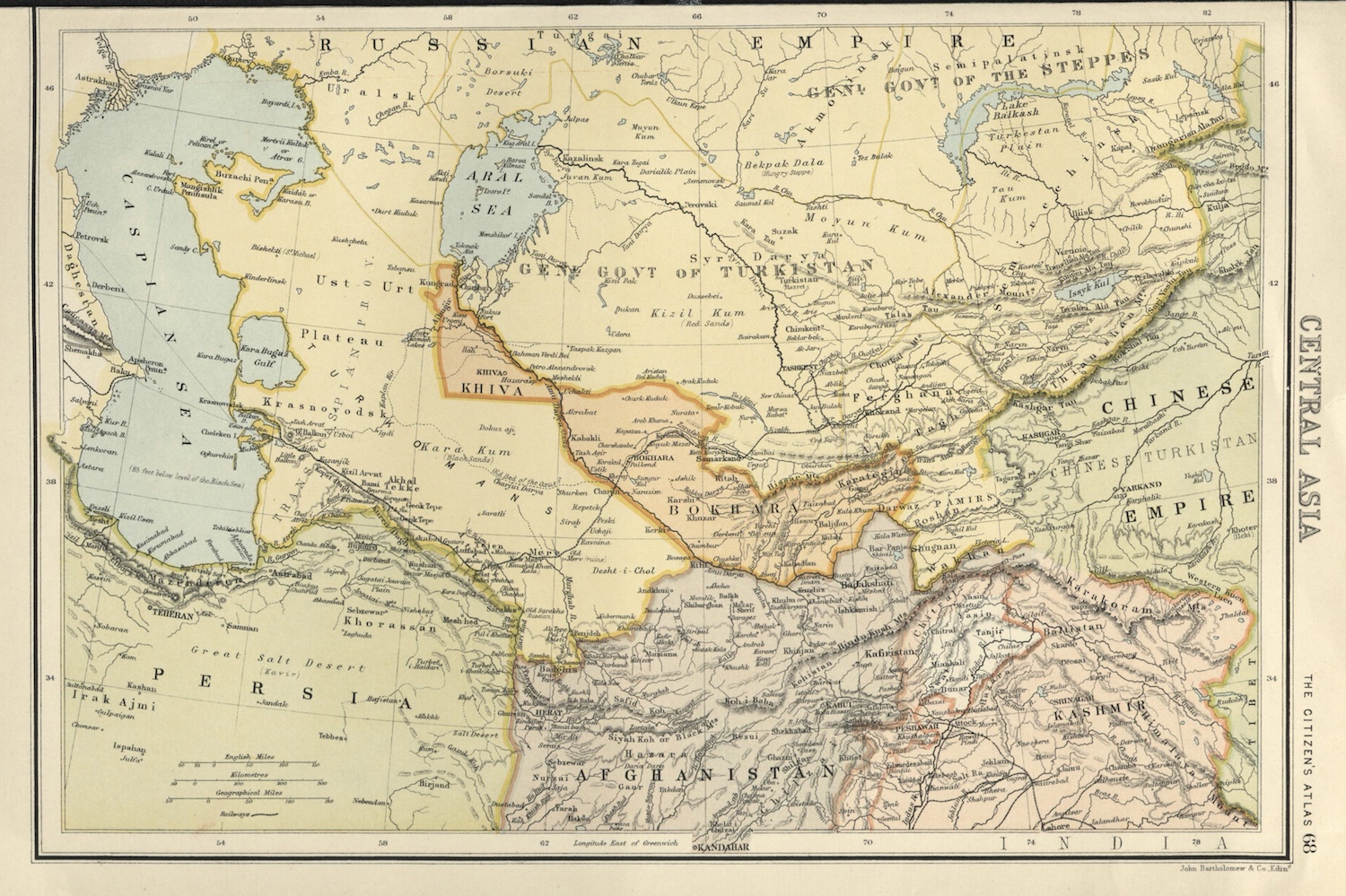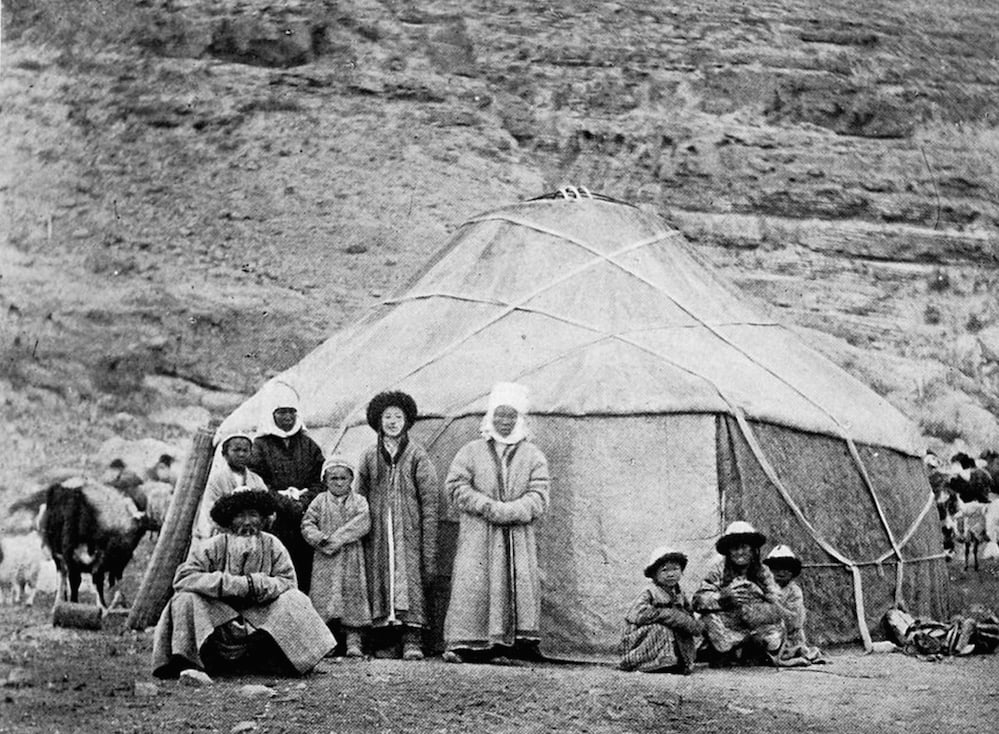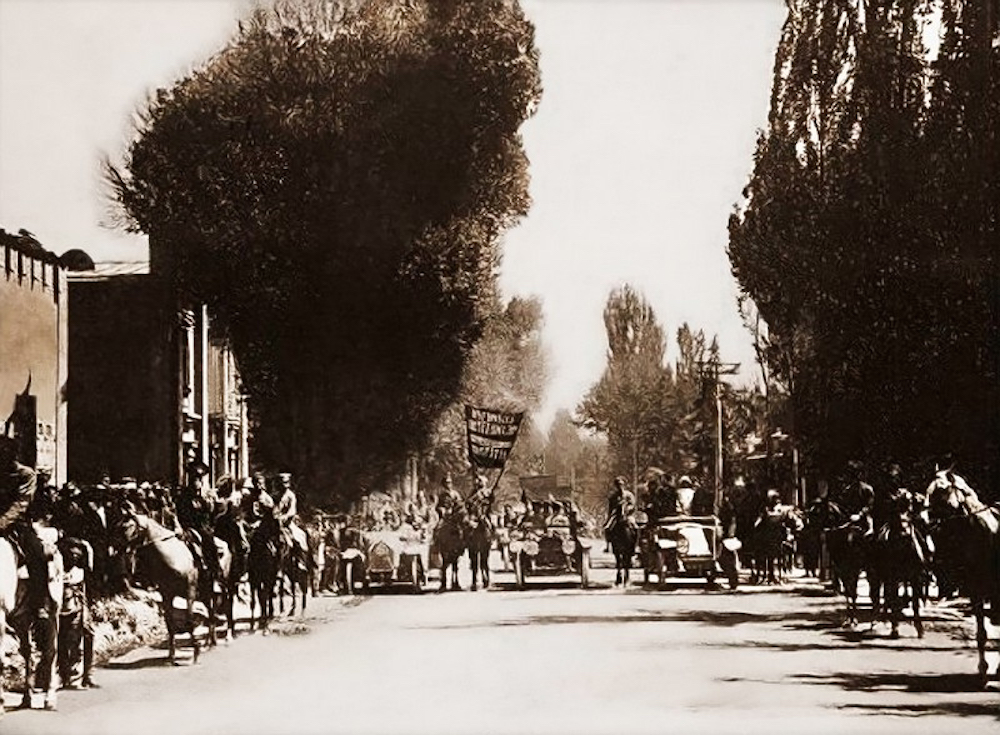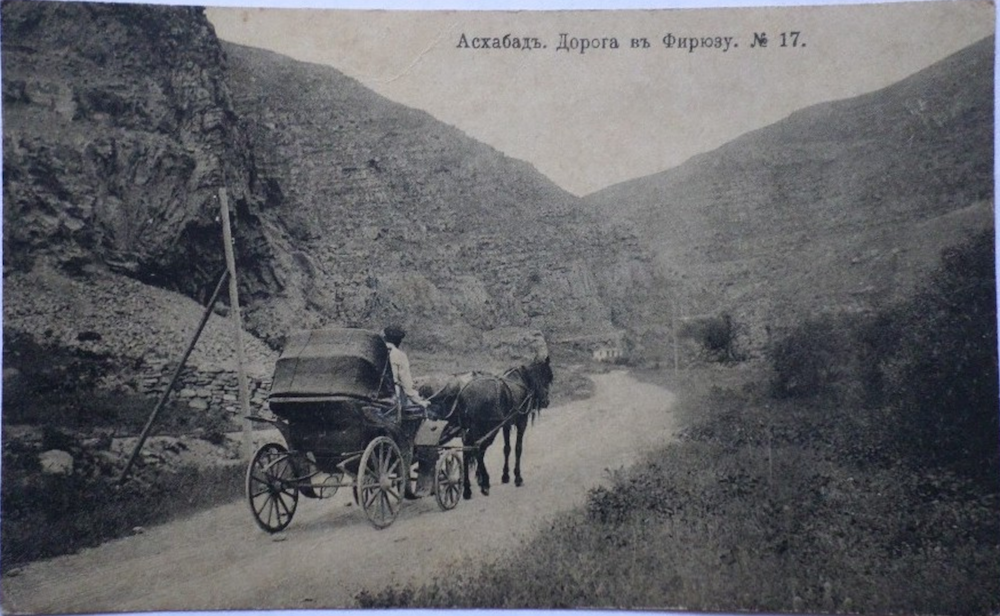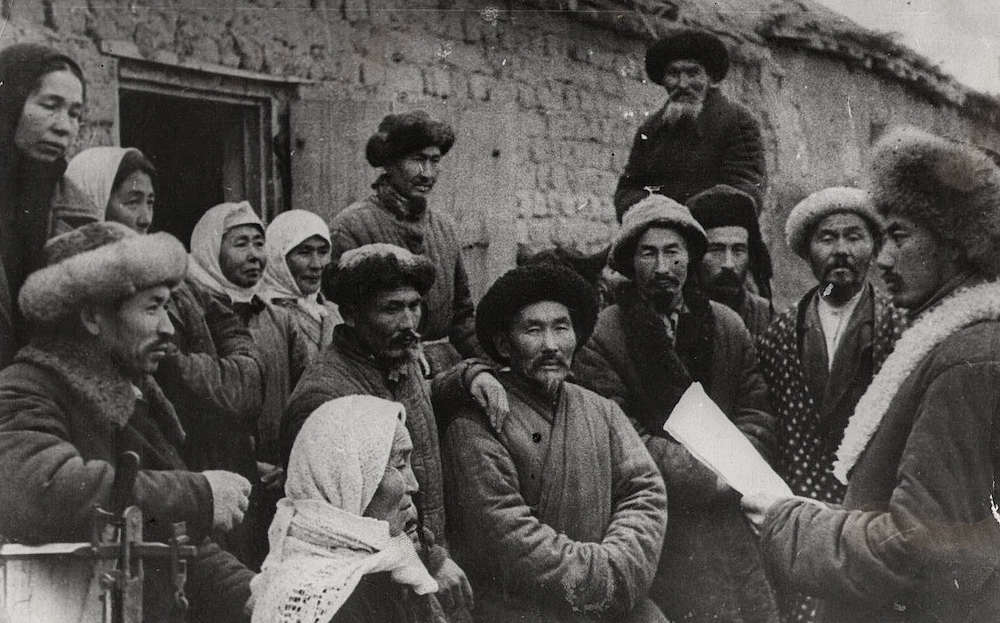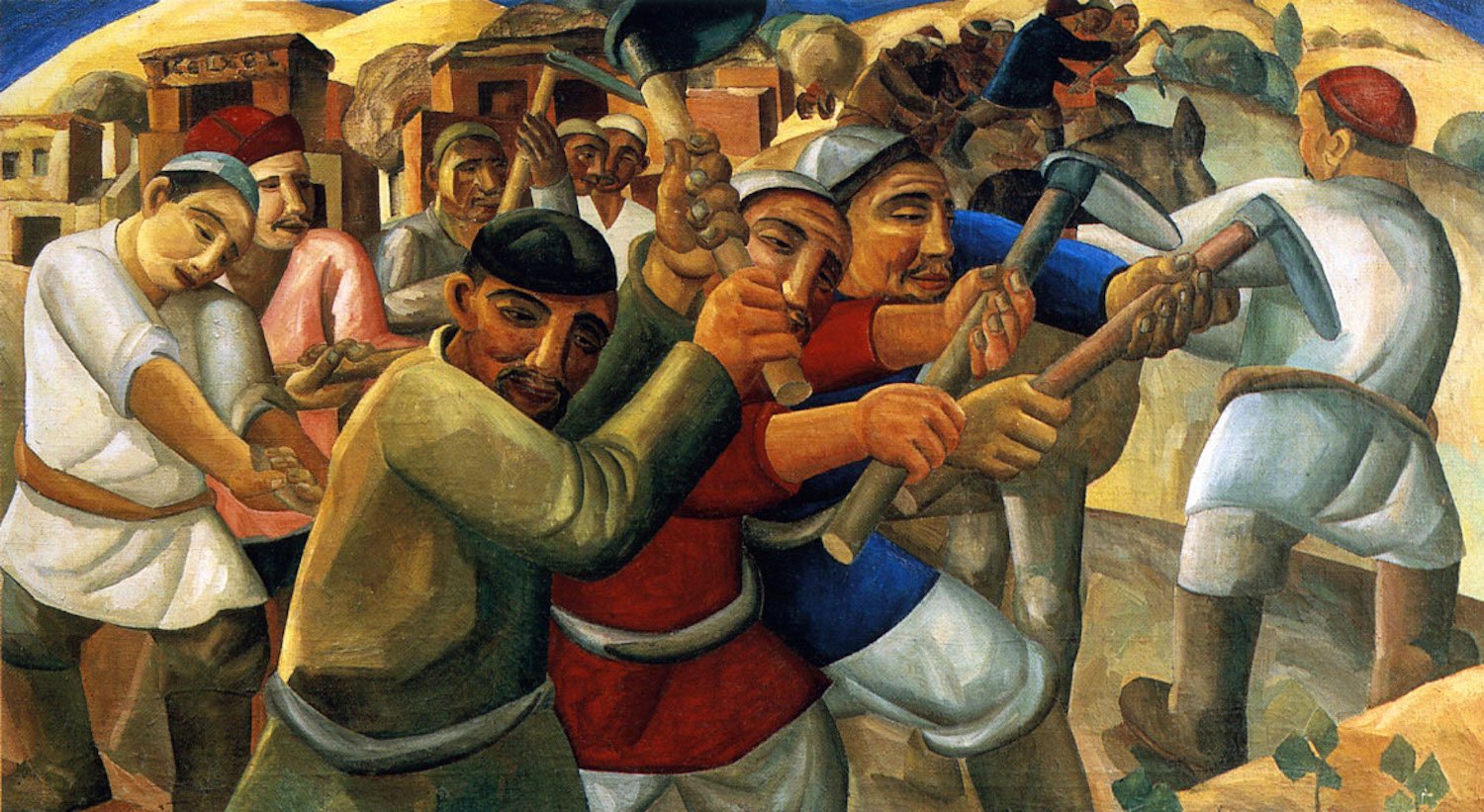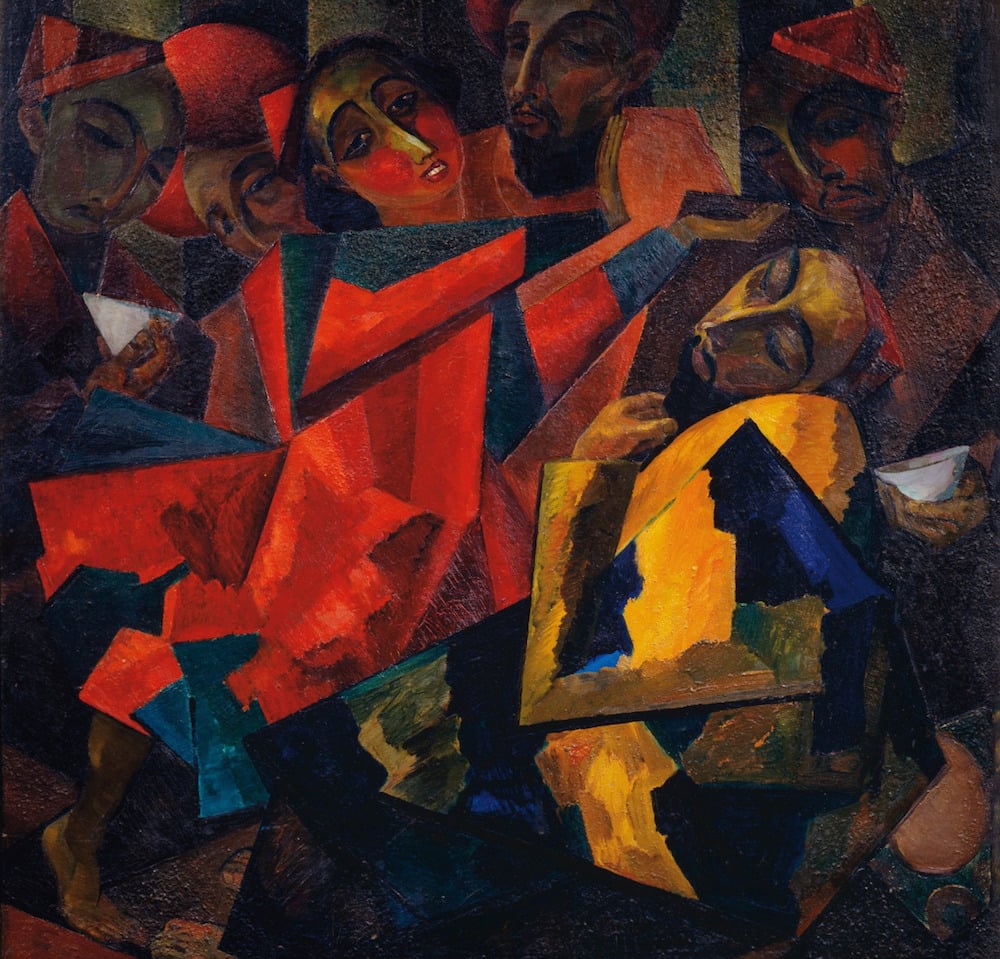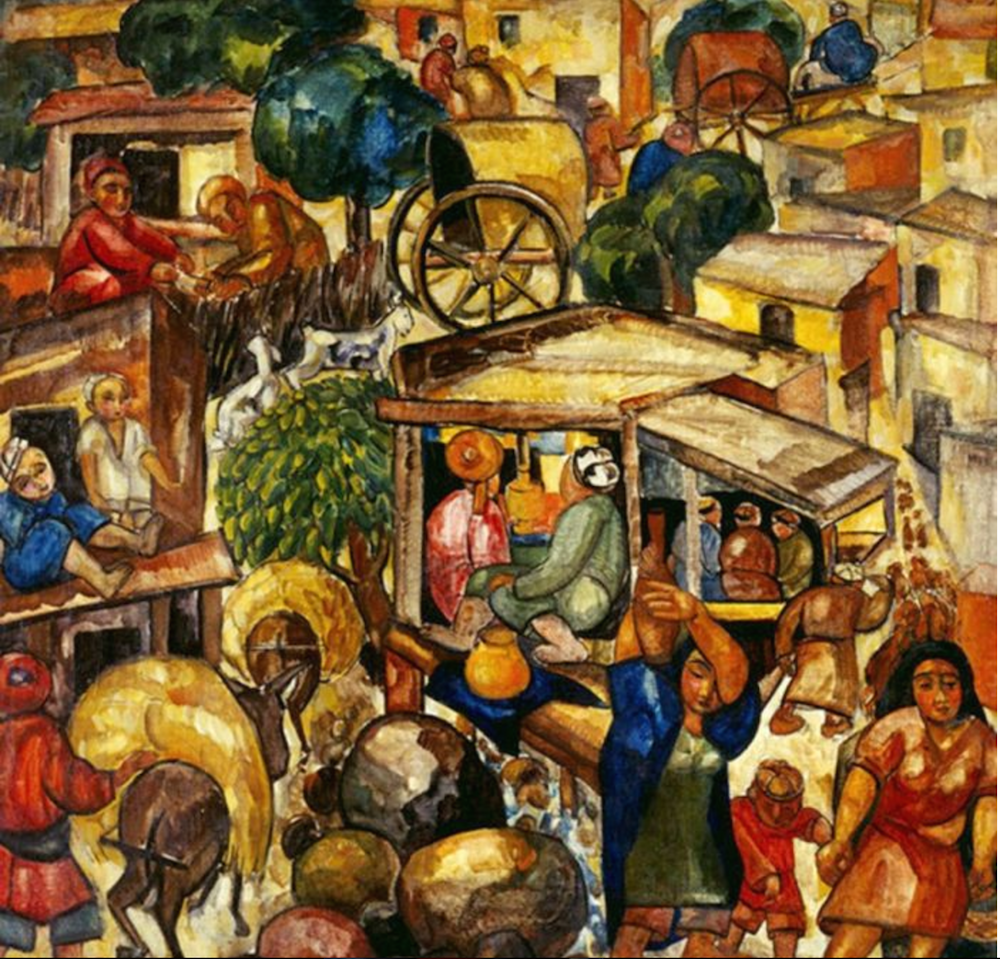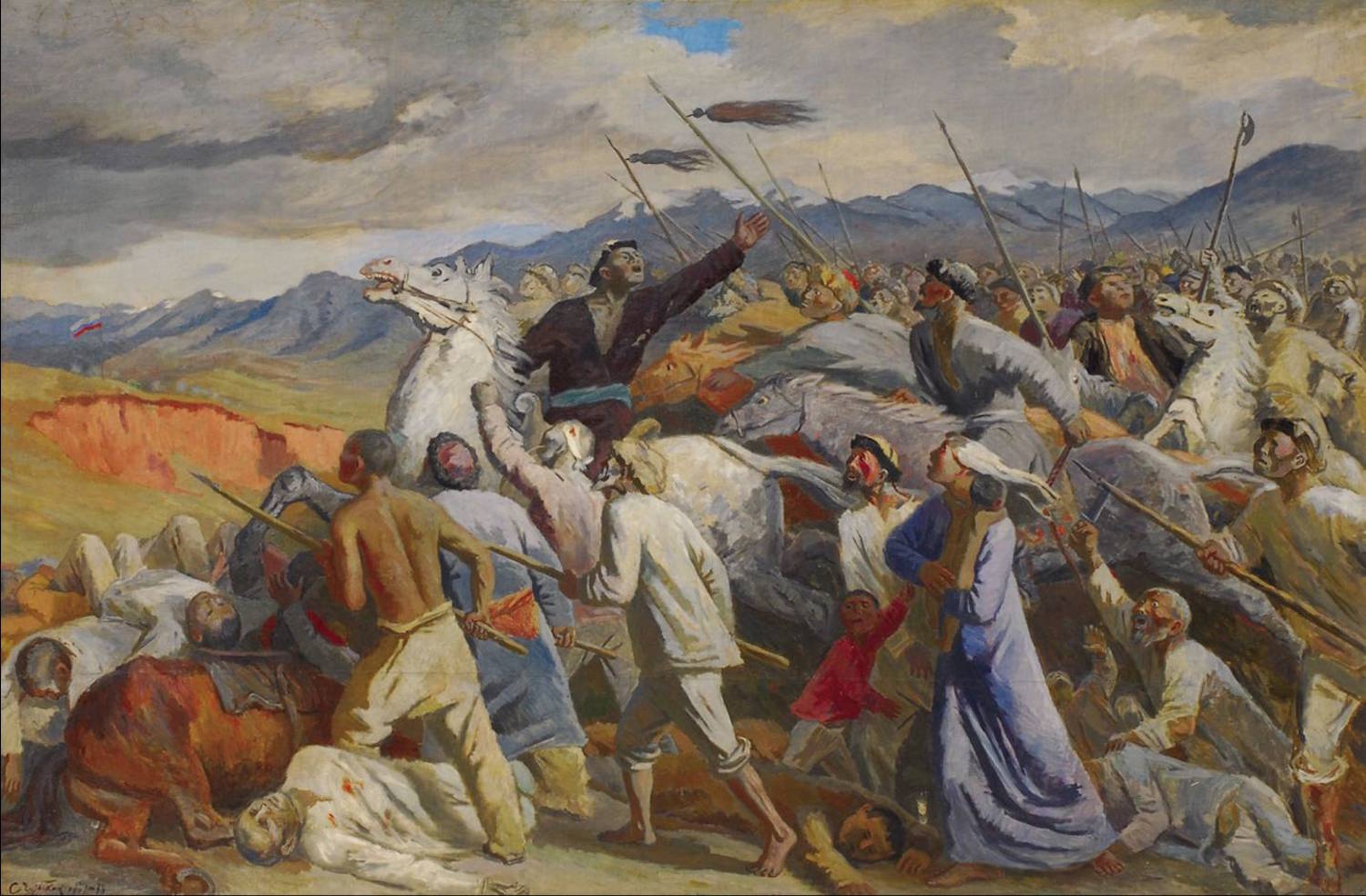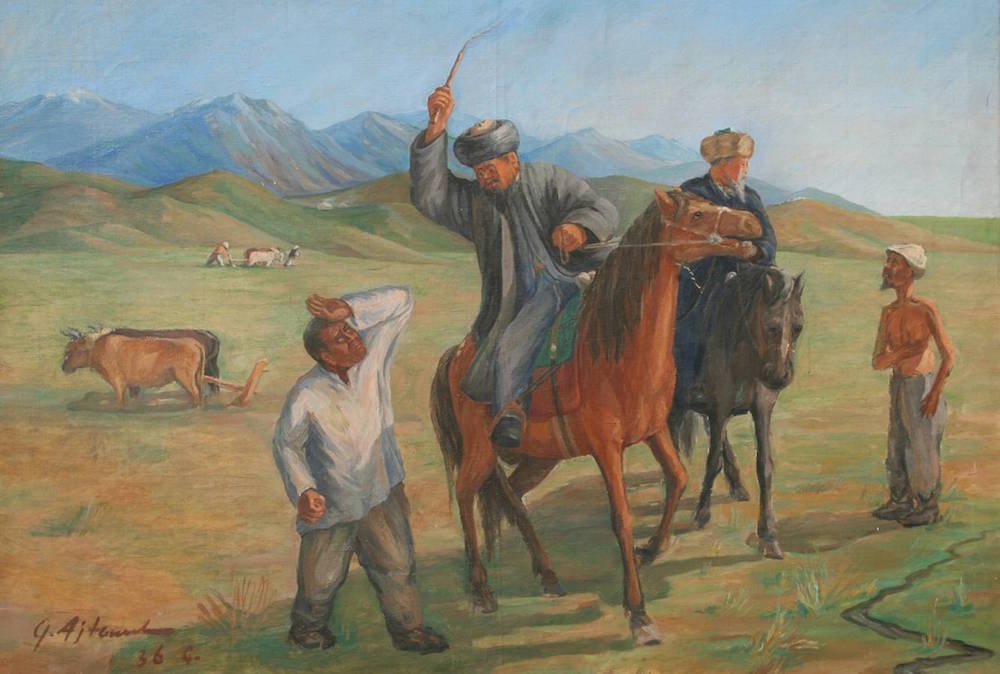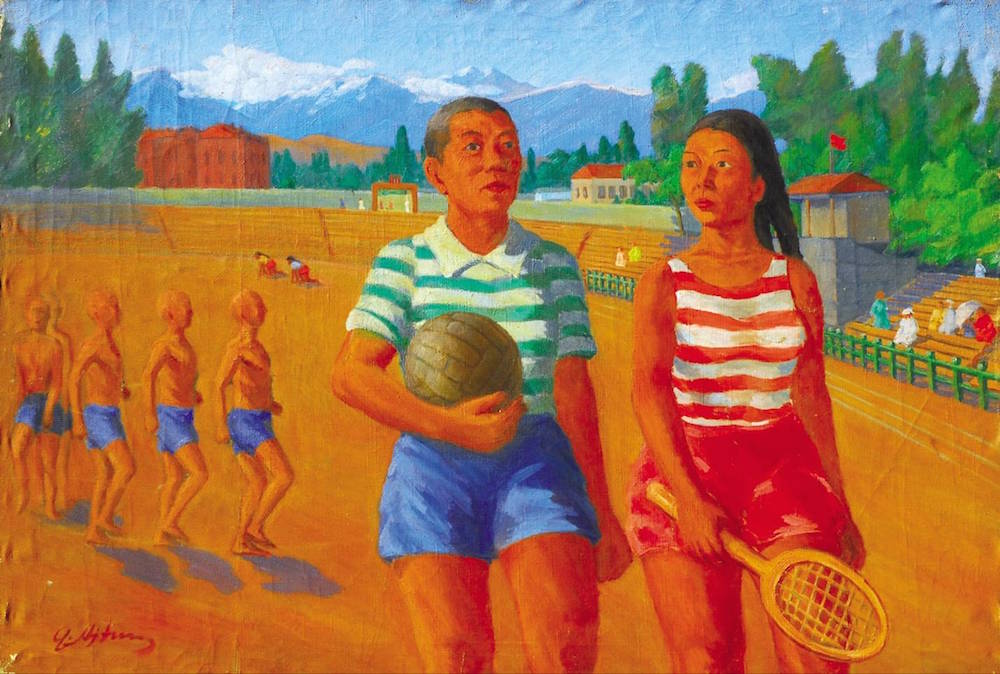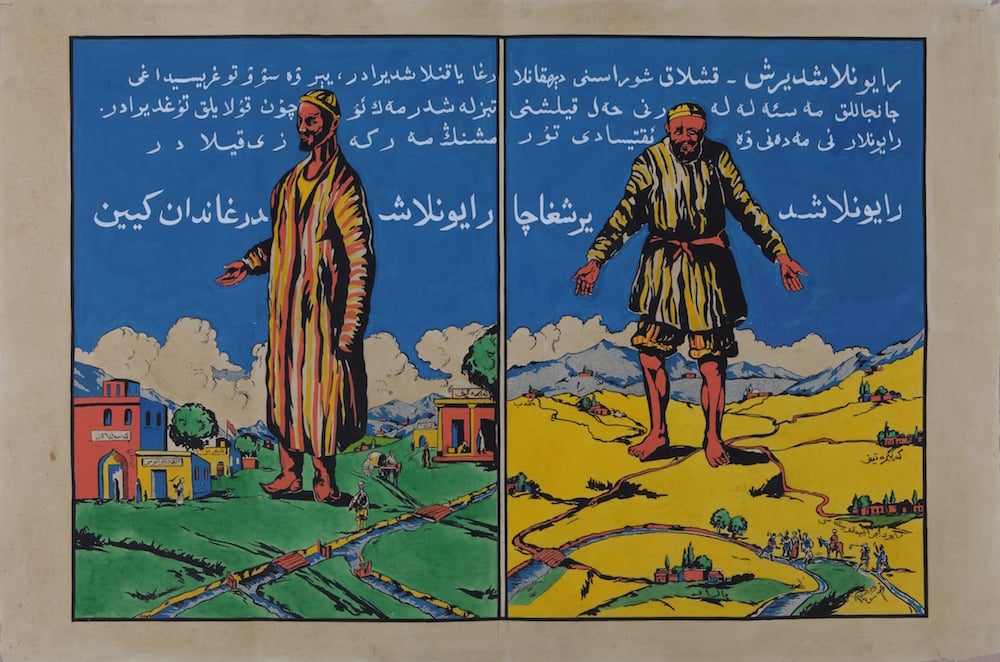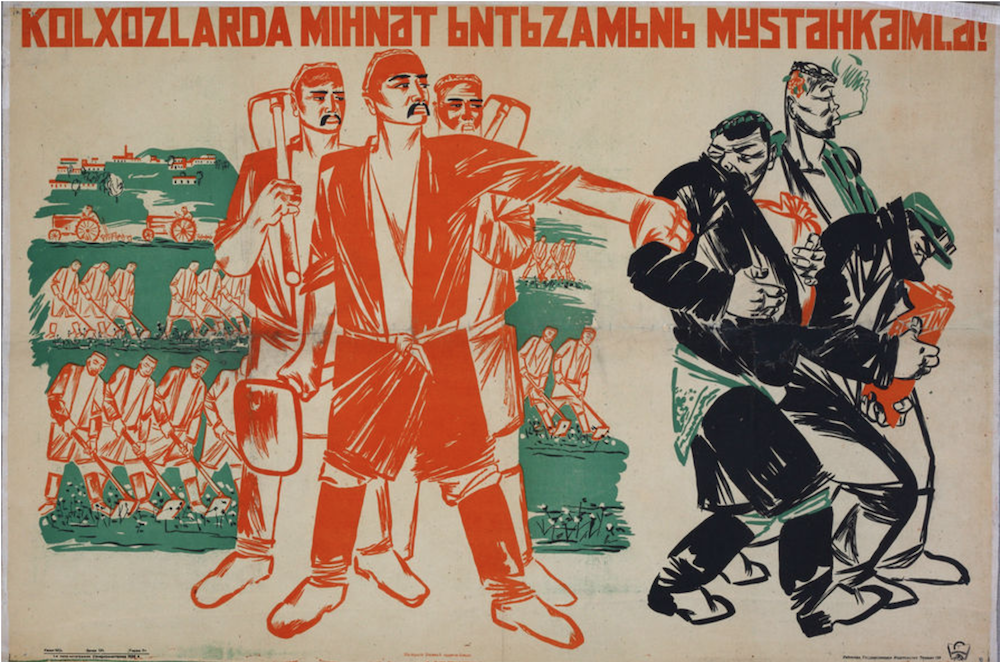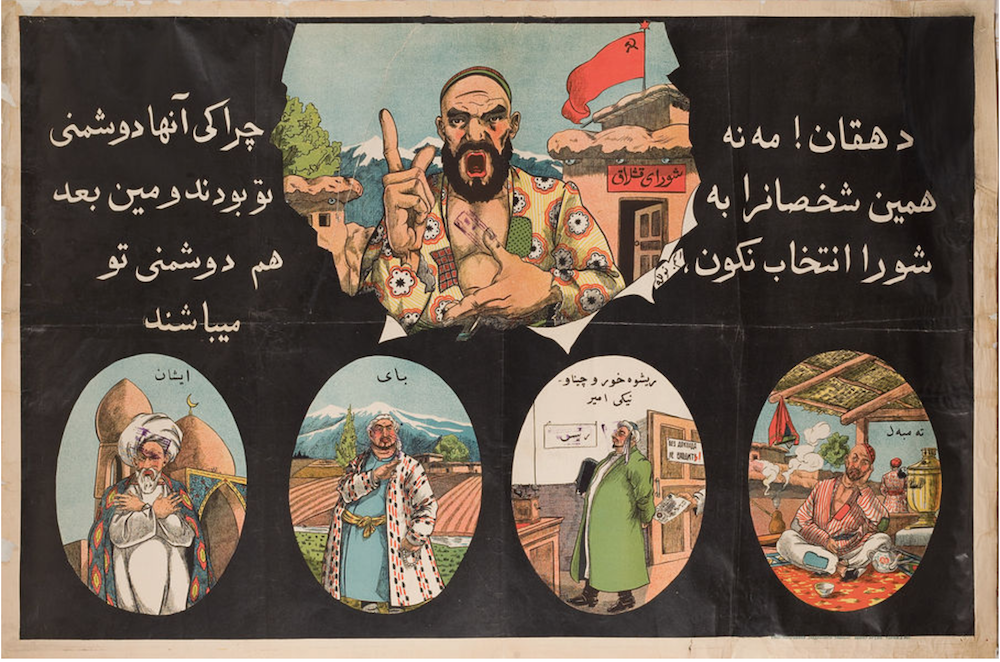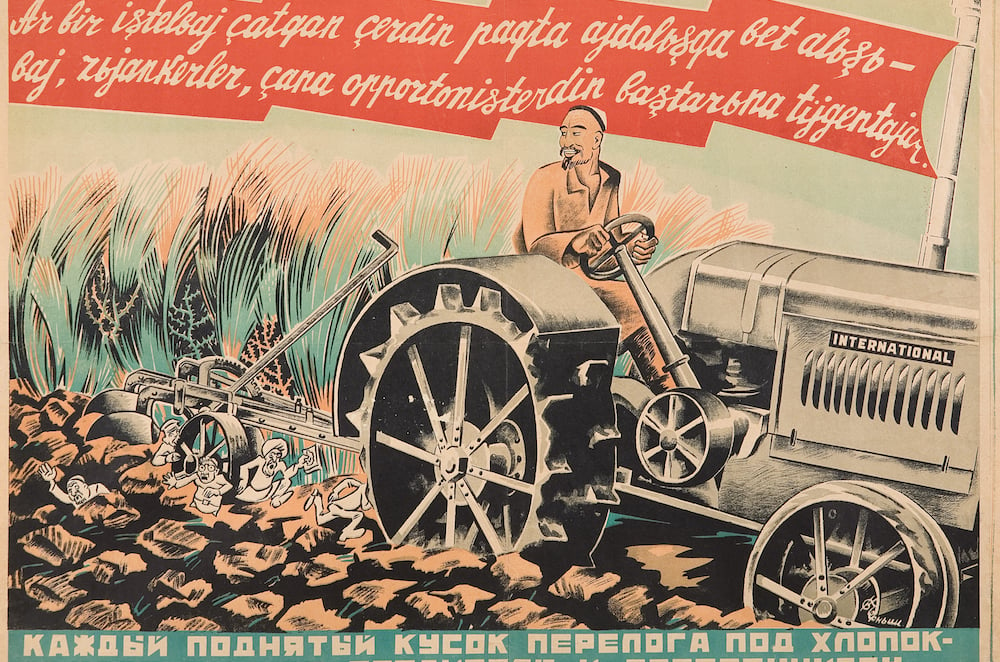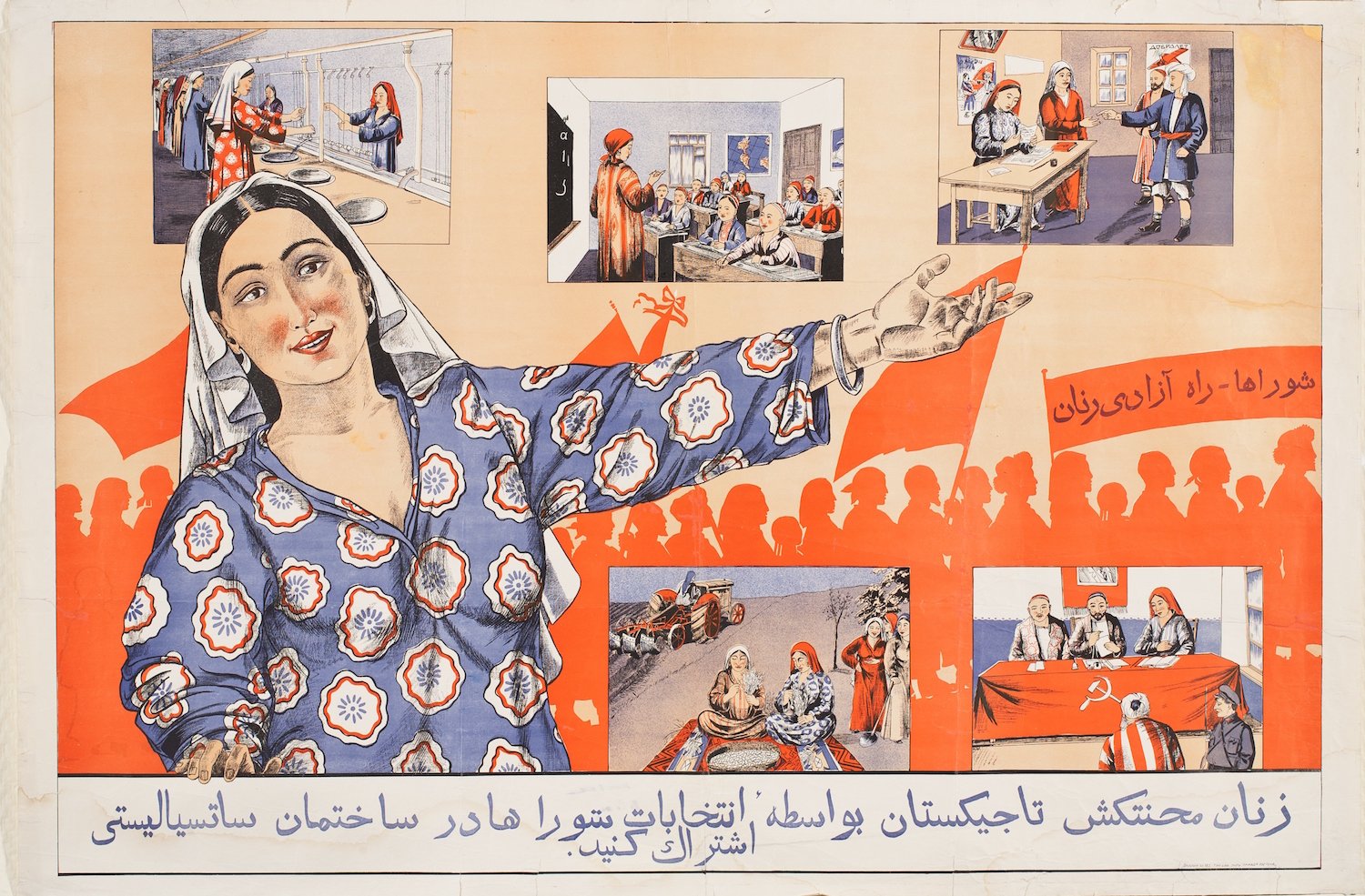Empire state of mind: the legacy of the Russian Revolution in Central Asia
The Bolsheviks inherited a huge empire from the Romanovs, and the effects of 1917 were felt thousands of miles from Petrograd. To this day, the nations of Central Asia are shaped by what happened a century ago. So what can they tell us about the history of the Revolution and its claims to emancipation?
The Russian revolution was not just Russian. The tsarist imperial state which the Bolsheviks seized governed from the Arctic to the Bosporus and from Central Europe to the Pacific. For the resource-drained, embattled young Soviet state, these imperial properties represented a logistical and ideological nightmare; scanning the lists of tiny and obscure Autonomous Soviet Republics and Oblasts, many of which sprung up and were dismantled or merged together in the space of only a few years, gives a sense of quite how heterogeneous the Revolution truly was.
As the political centre of this array, “Russia” understandably came to stand for a range of distinctly non-Russian peoples and histories. This kind of Russo-centric myopia has eventually fallen away in the European ex-Soviet states – no one these days is likely to confuse Ukraine and Russia so readily. Many blind spots persist, however, and the biggest among them is Central Asia: the land mass stretching from the Caspian Sea to China that contained five Soviet Republics, now known as the “-stans”: Kazakh, Kyrgyz, Turkmen, Tajik and Uzbek.
Turkestan, the Emirate of Bukhara and the Khivan Khanate were invaded and conquered by Russia in the second half of the 19th century. If arguments about the revolution often amount to whether or not the cultural and political modernisations it sparked were morally justifiable, given the violence involved, then Central Asia staged these questions on a massive scale.
To understand the effect of the revolution on different Central Asian cultures, I speak to Georgy Mamedov, artistic co-director of ShTAB, a regional cultural and activist platform based in the Kyrgyz capital Bishkek. With Oksana Shatalova, Mamedov has recently edited a collection of essays entitled Concepts of the Soviet in Central Asia, which tackles questions that have longed dogged attempts to make sense of the revolutionary legacy. Was Soviet Central Asia a colonial project? Did it emancipate women or just force new social norms upon them? Did it create bold new art or just exotic window-dressing?
Was Soviet Central Asia a colonial project? Did it emancipate women or just force new social norms upon them? Did it create bold new art or just exotic window-dressing?
“It’s very hard to talk about Central Asia as a whole in that period,” he cautions. “The territories were really vast, with different pro- and anti-Communist nationalist movements. Tashkent was a very big city, with European architecture in the colonial part. Samarkand was big, medieval Islamic centre with beautiful architecture. What is now Bishkek was then a very small town, more like a military fort, primarily populated by the Russians. Alma-Ata [now Almaty in Kazakhstan] was also a fort called Verny.”
The spread of Bolshevik ideology across this vast terrain was far from even. Tashkent, the old Empire’s military stronghold, had a powerful Russian population and took up ideas from Petrograd much quicker. “In Tashkent the first public museum was formed as early as 1918, based on the collections of a duke who had been exiled there,” Mamedov says. “A very famous Uzbek artist, Aleksandr Volkov, was already working with the Soviet commissariat on children’s art education in 1918.”
Other urban centres soon caught on: “In the early 1920s serious industrialisation projects started, towns became more international. As everywhere in the former Russian Empire, life was very dynamic. Maybe the institutional process was more chaotic here, but the idea that the political situation was somehow frozen in Central Asia and waiting for some active measure sent from above is not correct.”
As Soviet political power was solidified in the old Imperial territories, attention turned to art and its role in the tentative new social structures. Lacking the necessary infrastructure for a native film industry – Central Asian cinema only took off after the Second World War, during which the main Soviet film studios were evacuated to Kazakhstan – local Party activists turned to painting to spread their message.
“The main challenge [for Soviet art] was to represent those who had not been represented before: the proletariat,” Mamedov argues. “I think painting in Central Asia, in Uzbekistan and Kyrgyzstan in particular, in the 1920s and 1930s is occupied with trying to elaborate theoretically and visually the new subject to which the revolution gave birth. Not only the worker, but the national subject and women too.” The best-known art about Central Asia up to that point had been produced by touring Russians like Pavel Kuznetsov. “A lot of what was being produced exoticised and depoliticised these subjects. The challenge was serious: how to preserve and even celebrate particularity, but at the same time not to make these people, subjects, cultures into mere decoration.”
The main challenge for Soviet art was to represent those who had not been represented before
Mamedov highlights two representative artists from his native Kyrgyzstan who helped to reverse this trend: Semen Chuikov and Gapar Aitiev. “Chuikov was very true to life,” he says. “If he painted yurts he only painted the yurts of the poor. Strangely, these works are not very much favoured by Soviet and post-Soviet art historians because they’re not very professional, not very advanced, so to say. But his early artworks are important as part of the debate about the representation of Central Asian subjects.” Born in Bishkek at the turn of the century to ethnic Russian parents, Chuikov grew up in an age of increasing racial tension and studied at the famous avant-garde VKhutemas school in Moscow, but returned to throw himself into the Soviet Kyrgyz cause. “It’s interesting, he somehow betrays his Russian origin and stands on the side of the rebels,” Mamedov notes. Aitiev was younger, a more direct beneficiary of Soviet policy: he was the first Kyrgyz to receive domestic artistic education.
The clearest example of the rapid evolution of Soviet art in Central Asia took place in 1936 in Frunze (as the Bolsheviks renamed Bishkek). To mark the 20th anniversary of mass anti-colonial protests in 1916, the Frunze Artists’ Union organised an exhibition showcasing the best of Soviet Kyrgyz and Central Asian art. Featuring 140 paintings from professional and amateur artists, the exhibition was attended by 20,000 people in only a few months, a remarkable figure that proved how quickly Soviet culture had developed in the region. “I can’t imagine that any exhibition would attract 20,000 people in Bishkek today,” Mamedov admits. “If we look at these paintings now we’d consider them quite radical in their explicit criticism of colonialism and so-called “Great Russian” chauvinism.”
The likes of Chuikov form an important part of any critical re-evaluation of the ambiguous legacy of Central Asia’s revolution. The Soviet Union was not a continuation of the tsarist Empire, and indeed framed itself in explicitly anti-colonial terms; at the same time, the Central Asian republics were constructed according to principles devised in far away Moscow and Leningrad. Mamedov explains: “This was how modern Central Asian nations created themselves. And yet there is this alienation that is rarely reflected, at least seriously. Can we just call it colonial and end the story there? No, it needs to be explored differently. Because most conversation is generated in Russia and in Russian, where the colonial aspect is usually ignored.”
“To try and conceptualise this alienation, we call it “emancipation without a subject”. The revolution was emancipatory, but that this was an emancipation that was imposed onto the subjects of Central Asia. So let’s look for those subjects, for the agency in these processes. We are not so naïve to imagine that everything was imposed externally and people silently obeyed. We should look for the voices on the ground.”
All this is as relevant today as ever before. The post-Soviet “-stans” are fundamentally shaped by their historical and geographical links to Russia and to 1917. Trade with Moscow is still crucial, and the autocratic politics that unfortunately define these now-independent countries have grown out of old Communist party caches. As scholar Sergei Abashin has pointed out, it is easier to say that today’s Central Asia is in a postcolonial relationship with Russia than it is to state definitively whether Soviet Central Asia was itself colonial.
The post-Soviet “-stans” are fundamentally shaped by their historical and geographical links to Russia and to 1917
Mamedov’s desire to re-conceptualise this history is tied to their desire to improve conditions in the here and now. Have progressive ideals been tainted forever by their association with the Soviet state? Are current desires for gender equality, healthcare, workers’ rights and internationalism equivalent to the long-abandoned Soviet project? After one hundred years of incomplete revolution, Mamedov is adamant that simple nostalgia will not suffice.
“People here appeal to the Soviet legacy in a reactionary way,” he says. “For example, there is nostalgia about the Soviet city of Frunze: how clean it was, how educated the population was. But these appeals will always be contaminated by xenophobic feelings towards migrants who come to Bishkek now from other parts of the country. It’s a protectionist, reactionary, xenophobic statement which at the same time appeals to the modernisation legacy of the Soviet Union.”
The truly progressive way forward, he concludes, is to celebrate the “avant-garde aspects” of the Soviet period. Not in order to reconstruct the past but in order to build something new, without needing to turn abroad for guidance: emancipation without alienation.
Text: Samuel Goff
